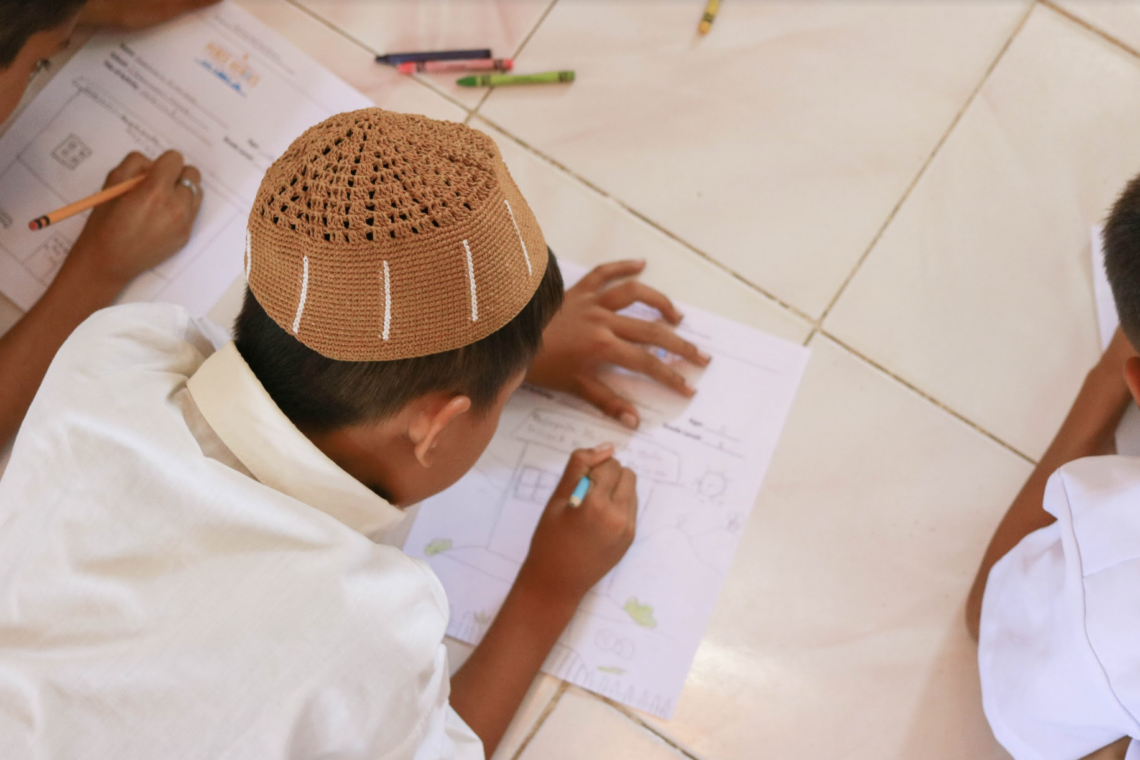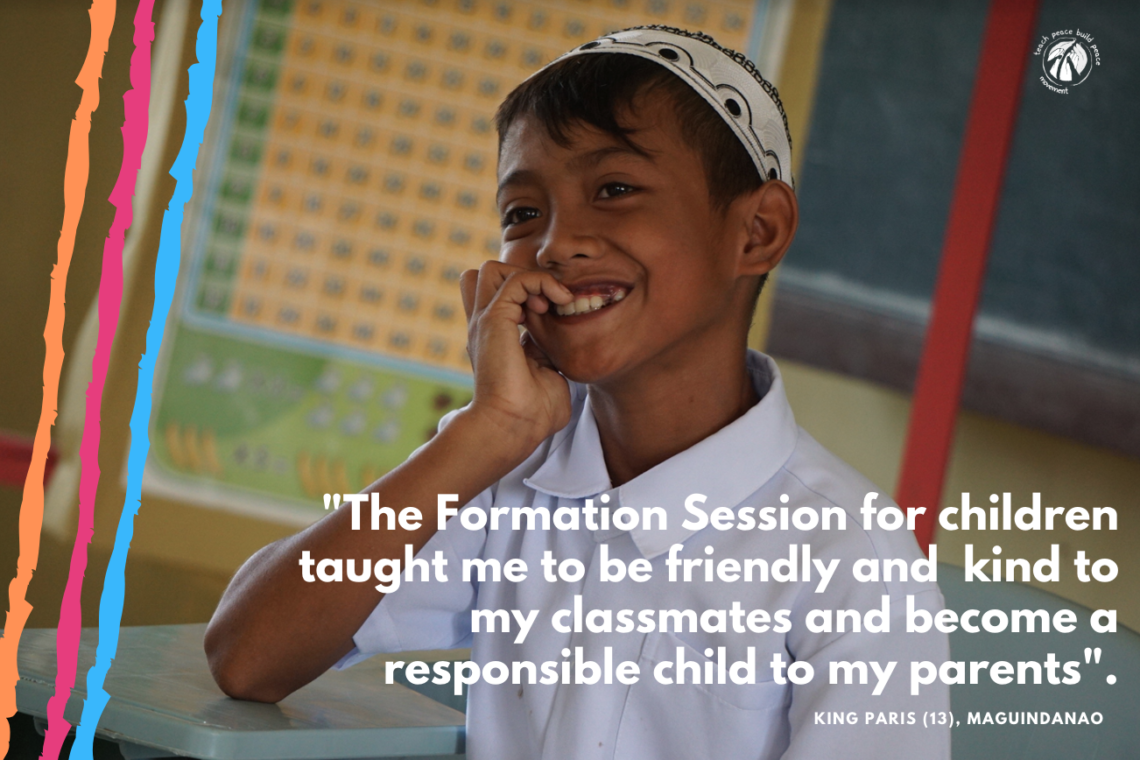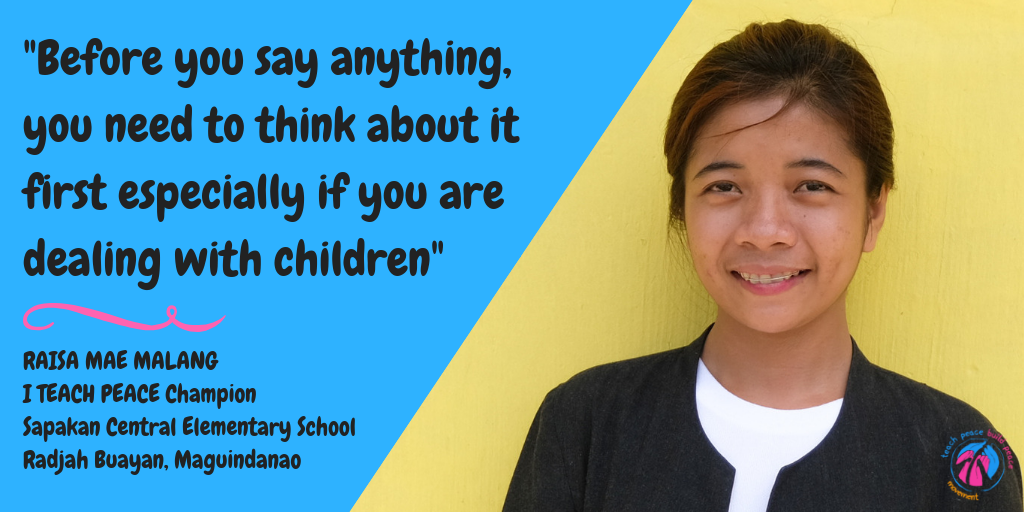“… I throw the trash away, I sweep the floor, and now, my teacher can even ask me to go up the board and answer in front of the class.” This is what Adzam, 12 years old, said when asked about the changes he observed since joining the Teach Peace Build Peace Movement’s peace education sessions. He ignored those simple tasks back when he was still, as he described himself, “stubborn”. But now, Adzam sees himself as more obedient and diligent in and out of their home.
Adzam shared having one particular friend who he partners with to clean their classroom after school. He described his friend as having a good heart telling us about how he would offer to lend his pen during class or share his food with others.
At such a young age, Adzam went beyond just learning the importance of these little acts of peace. He is also putting them into practice. It often gives him positive feelings not for but from doing good deeds.
With joy and pride in his eyes, Adzam recalled how happy his parents were since he started showing positive changes in his behavior and recounted the times he peacefully heeded their guidance. This makes him genuinely happy, both as a son and as a Peace Hero.
“If not for TPBPM, I wouldn’t be a Peace Hero.” Adzam felt that he would not learn about the virtues of doing good if not for the peace education sessions he attended.
Little did he know that peace has always been inside him; the sessions just served as a tool to let the inherent good in him manifest. Adzam’s transformation, together with the other children who have undergone TPBPM’s Peace Education Program, is a testament to how Peace Education has contributed to these children’s cognitive, emotional, and interpersonal skills which in turn, resulted to positive behavioral transformation.
Adzam’s testimony of how transformative peaceful actions can be is truly inspiring. Take it from a child who continuously strives to lead by example.
“I learned to play, draw, and color.” As small as these may be, Adzam went on to learn beyond his years. Next time we think of grand ways to teach our kids peace, we might want to consider starting small. After all, one small step leads to another.
PEACE HEROES FORMATION PROGRAM
The Peace Heroes Formation (PHF) Program provides a holistic approach to Peace Education by incorporating Conflict Prevention, Conflict Transformation, and Proactive Citizenship Peace Building. It was designed to apply creative and innovative ways and approaches in teaching about knowledge, skills, attitudes, values, and behavior towards a Culture of Peace. It aims to bring about behavior change that prevents the transformation of conflict into violence and war. This program also hopes to show the relevance of Peace Education in our society, and be able to contribute to ways on how to institutionalize educating schools and communities on the art of peaceful living. TPBPM utilizes existing social structures such as family, school, and communities as the primary niche in nurturing the heart of a child to be a Peace Hero.




![“I now have a clear vision of what it [peace] is, of how I can apply it not just in my classroom but also in myself…”.png](https://teachpeacebuildpeace.com/wp-content/uploads/2018/10/I-now-have-a-clear-vision-of-what-it-peace-is-of-how-I-can-apply-it-not-just-in-my-classroom-but-also-in-myself…”.png)
